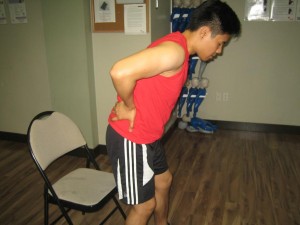An annular tear involves ripping or tearing of the annulus fibrosus which is the sturdy exterior covering the intervertebral discs. It is important to note that the intervertebral discs work as cushions between the vertebrae as well as providing support to the bone structure of the neck and back.
Excess stress on the discs from repetitive activities also places strain on the discs, thus resulting to an annular tear. The injury can cause significant pain and can be debilitating. Immediate treatment is vital once the symptoms manifest.
What are the causes?
- Aging process

Conservative treatment includes pain medications or non-steroidal anti-inflammatory drugs (NSAIDs) such as ibuprofen or naproxen. Application of ice or heat can also help alleviate the pain. - Any traumatic injury especially in high-impact sports such as basketball, rugby or football
- Activities that involve strenuous movements such as heavy lifting or bending
What are the indications of an annular tear?
The exterior layer of the annulus fibrosus is extensively innervated which triggers intense pain. When it comes to radial tears, it results to the protrusion of the nucleus pulposus to the neighboring tissue. In some cases, there are no symptoms where the individual is left undiagnosed. The usual symptoms include the following:
- Intense pain
- Inability to perform daily activities
- Weakening of the arms and/or legs
- Numbness and tingling sensations
Management
For mild cases, it often heals on its own. Conservative treatment is often enough for healing an annular tear. Nevertheless, if there is intense pain that could not be treated by conservative measures, surgery might be an option.
Conservative treatment includes pain medications or non-steroidal anti-inflammatory drugs (NSAIDs) such as ibuprofen or naproxen. Application of ice or heat can also help alleviate the pain. Most cases of uncomplicated tears heal with conservative treatment for a period of weeks or months.
In case the individual has an annular tear without disc herniation, surgery is not needed and the individual can greatly benefit from conservative measures. There are cases in which a tear progresses to disc herniation in which the nucleus pulposus protrudes through the exterior tear into the spinal canal. The protrusion places pressure to the neighboring spinal nerves which triggers pain.
Quick Note / Disclaimer
The material posted on this page on an annular tear is for learning and educational purposes only. To learn to recognize and manage spinal injuries and conditions, register for a first aid and CPR course with Saskatoon First Aid.

